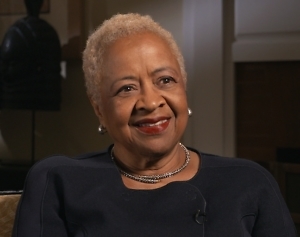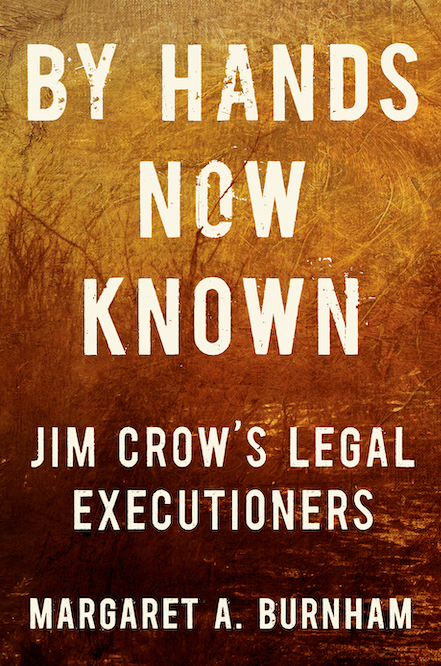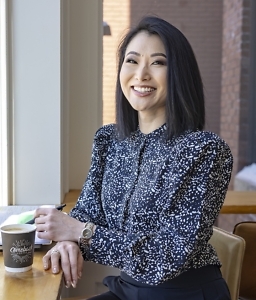Looking Back—and Looking Forward
Editor Adam Ross talks with Chapter 16 about the 500th issue of The Sewanee Review
When Nashville novelist Adam Ross was appointed editor of The Sewanee Review last year, he took his place in a literary lineage that dates back to 1892. George Core, the editor Ross replaced, served in that role for forty-two years. Many of the titans of twentieth-century literature were first published in its pages, and the journal itself is the oldest continuously published literary magazine in the country. But in the face of all that history, the first thing Ross did was turn the place upside down and shake it. Hard.
 He started with an entirely new staff. He retired the venerable blue cover—a design decision made by Allen Tate, one of the original Agrarians, back in 1944—and replaced it with a changing palette of colors that reflect each issue’s seasonal publication date. He added images to the journal’s pages. He launched a new website. And all that new packaging was meant to showcase the biggest change of all: the editorial vision Ross himself brings to the journal. As he explained to Chapter 16 when he was first appointed editor, “What I’m coming-out-of-my-skin excited about is the opportunity to give writers I admire a chance to express themselves in new ways and new writers a place to be read for the first time.”
He started with an entirely new staff. He retired the venerable blue cover—a design decision made by Allen Tate, one of the original Agrarians, back in 1944—and replaced it with a changing palette of colors that reflect each issue’s seasonal publication date. He added images to the journal’s pages. He launched a new website. And all that new packaging was meant to showcase the biggest change of all: the editorial vision Ross himself brings to the journal. As he explained to Chapter 16 when he was first appointed editor, “What I’m coming-out-of-my-skin excited about is the opportunity to give writers I admire a chance to express themselves in new ways and new writers a place to be read for the first time.”
This fall marks the publication of the 500th issue of The Sewanee Review and a full year of issues under Ross’s leadership. Even a cursory glance through the nearly 900 pages of fiction, poetry, and essays in those issues makes it clear that he has made good on his own hopes for the future, many times over, and he’s done it with an eye toward preserving what’s best about the journal’s long history.
Chapter 16: Let’s pretend you’re Janus, looking backward to the past and forward to the future at the same time. Looking back, what was the smartest decision any Sewanee Review editor—or the university itself—ever made to ensure the future of this venerable journal?
Adam Ross: The first decision was by the University of the South, in 1892, not to fire professor William Peterfield Trent. He’d just published a controversial biography of the eminent Southern writer William Gilmore Simms which argued that Simms’s failure as a literary artist was due to his culture’s dependence on a slavery-based economy. Trent’s argument won him many prominent fans up North, like Teddy Roosevelt and Woodrow Wilson, as well as enemies throughout the South. He was dubbed a traitor by the Richmond Times and The Charleston Post and Courier. Had the University caved to pressure from, among others, the South Carolina Episcopalians, who called upon the Board of Trustees to terminate him, Trent would never have founded The Sewanee Review. So, good on Sewanee.
The second was editor Andrew Lytle’s decision to appoint Allen Tate as his successor in 1944. Tate commissioned a redesign of the magazine by legendary book designer P. J. Conkwright—the blue cover with which the Review would become associated for the next seventy-three years. Tate persuaded the University to boost the magazine’s editorial budget, which in turn attracted national-caliber writers. Simultaneously he placed the Review in the country’s top bookstores. The result of these drastic changes was that, in a very short amount of time, Tate managed to establish the Review as the leading literary magazine of its day. Consider the contributors to his first issue that fall: Katherine Anne Porter, Wallace Stevens, W. H. Auden, John Crowe Ransom, Marianne Moore, and Robert Lowell. That’s not a bad table of contents.
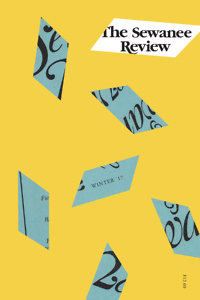 Chapter 16: Looking forward, what do you view as the most important thing you can do yourself to ensure the journal’s future?
Chapter 16: Looking forward, what do you view as the most important thing you can do yourself to ensure the journal’s future?
Ross: First, you keep publishing great new and up-and-coming voices: fiction writers, poets, and nonfiction writers like Sidik Fofana, Tiana Clark, Jen Logan Meyer, Elizabeth Weld, John Sesgo, Edgar Kunz, Emily Vizzo, Kim McLarin, and Taije Silverman. Second, you seize on writers who may not yet have developed a national audience but who, in my opinion, will soon take over the world, such as Danielle Evans, Alexander Maksik, Donika Kelly, Justin Taylor, and Kaveh Akbar. Third, you give established writers like The New Yorker’s Louisa Thomas or Nick Paumgarten a chance to write on subjects they might not get to explore elsewherein our fall issue those two contributed essays on Ralph Waldo Emerson’s eyes and youth hockey, respectively.
Finally, you encourage writers who aren’t yet fully developed to keep going because they end up coming back to the fold. At the celebration of our 500th issue, Ben Fountain spoke very movingly of the supportive rejection notes he received from my predecessor, George Core. Core performed an invaluable service to the literary world by cultivating talents like Fountain and countless others. And then I reaped what Mr. Core sowed by publishing Ben’s amazing story, “One Hundred Million Years of Solitude,” in the fall issue.
Chapter 16: Looking back, what’s the most surprising piece of writing you’ve discovered in The Sewanee Review’s deep archive?
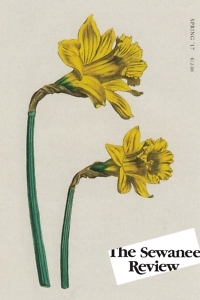 Ross: This is easy. I’m a huge fan of Nobel laureate Saul Bellow and knew that he’d been a contributor to the Review. When I took over, I went onto the database to see just what we’d published by him. It was “The Coblins,” a chapter from The Adventures of Augie March, which not only put Bellow on the map and won him the National Book Award but also single-handedly gave birth to Jewish modernism as we know it. Bellow’s explosion onto the scene made a place at the table of American letters for writers like Philip Roth, Bernard Malamud, Joseph Heller, Nathan Englander, Jonathan Safran Foer, Nicole Krauss, and Jami Attenberg.
Ross: This is easy. I’m a huge fan of Nobel laureate Saul Bellow and knew that he’d been a contributor to the Review. When I took over, I went onto the database to see just what we’d published by him. It was “The Coblins,” a chapter from The Adventures of Augie March, which not only put Bellow on the map and won him the National Book Award but also single-handedly gave birth to Jewish modernism as we know it. Bellow’s explosion onto the scene made a place at the table of American letters for writers like Philip Roth, Bernard Malamud, Joseph Heller, Nathan Englander, Jonathan Safran Foer, Nicole Krauss, and Jami Attenberg.
Chapter 16: Looking forward, who are some of the out-of-reach (so far) dream writers you’d love to see in these pages?
Ross: When I took this job in 2016, if you’d asked me who I’d have managed to publish in 2017, I wouldn’t have had the gumption to say Richard Russo, Alice McDermott, Lauren Groff, Stephanie Danler, Mary Ruefle, Jon Meacham, John Jeremiah Sullivan, Christian Wiman, Francine Prose, Mary Jo Salter, Tom Franklin, Ben Loory, and Jamie Quatro. So maybe it’s an impossible dream of mine that Jennifer Egan, Jim Shepard, Heather McHugh, Jorie Graham, Gillian Flynn, Josh Cohen, Megan Abbott, David Gates, Junot Diaz, Adam Johnson, Cheryl Strayed, Nicholson Baker, and Rachel Cusk will appear in the 2018 volume. And maybe not. You’ll have to subscribe to find out.
 Chapter 16: Looking back, The Sewanee Review has been slow to recognize the reach and potential power of the literary Internet. What are the advantages of a print-only publication?
Chapter 16: Looking back, The Sewanee Review has been slow to recognize the reach and potential power of the literary Internet. What are the advantages of a print-only publication?
Ross: There are none. This is why, when we designed our website, we created one that is password authenticated, just like your subscription to The Wall Street Journal or The New York Times. People read on so many different platforms that not to give readers digital access seems like a waste.
Chapter 16: Looking forward, any plans to take down that pay wall?
Ross: Absolutely not. The Conglomerate, our blog, is, of course, free, and we always release one freely available online feature per issue, but our primary revenue comes from subscriptions. I’m of the generation that was there at the beginning of the Internet, and we heard all the promises about skyrocketing ad revenue if content was given away. Soon afterward, I had a lot of friends in publishing and journalism who were out of work. So as far as I’m concerned, the more free stuff you have on your website, the more it dissuades subscribers from buying what you’re selling. It also sends the wrong message about art itself. Art feeds the soul. Art isn’t free.
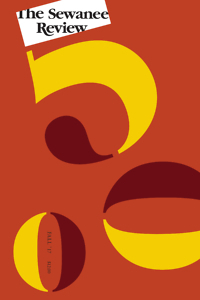 Chapter 16: Looking back, it’s easy to guess that the founders of The Sewanee Review—and indeed many of its fairly recent contributors—could never have imagined this deeply rooted Southern institution as a welcoming place for such diverse voices. Have you gotten any blowback against your editorial vision?
Chapter 16: Looking back, it’s easy to guess that the founders of The Sewanee Review—and indeed many of its fairly recent contributors—could never have imagined this deeply rooted Southern institution as a welcoming place for such diverse voices. Have you gotten any blowback against your editorial vision?
Ross: Absolutely. We keep a file of correspondence and we got some very well-crafted pieces of hate mail from several disaffected subscribers. And who can blame them? The Review is different in many ways: it has pictographic elements, it’s been redesigned, the blue cover is gone, it’s populated with a different set of writers. You lose some people when you change, but unless something is working perfectly, I’ve never heard a good argument for not changing.
It’s also a fact that the Review has always considered itself a quarterly that only happens to exist in the South. Yes, the Review published some of the earliest work of modern Southern giants like Flannery O’Connor, Cormac McCarthy, Peter Taylor, and Eudora Welty, but at its best the magazine was always part of the national literary conversation. We were the seat of the New Criticism, after all, and that approach is so deeply rooted in the humanities that now it’s practically taken for granted.
Chapter 16: Looking forward, now that you’ve hired and trained a staff, shepherded a print redesign, launched a website, and published the 500th issue of the journal, will there finally be time to get back to your own novel-in-progress, Playworld?
Ross: I am happy to report that these past several months have been very productive. Once late spring rolled around and our new staff got up to speed, I was able to begin getting good work done on my novel and am aiming to have a draft done by the end of next summer. Which also means that my wife just rolled her eyes.

Margaret Renkl is the editor of Chapter 16 and a contributing opinion writer for The New York Times. She lives in Nashville.
